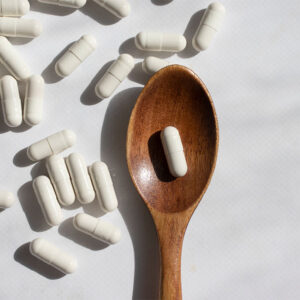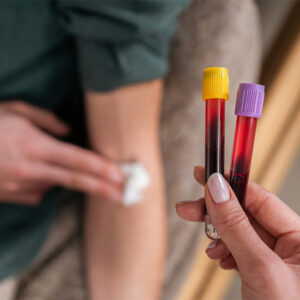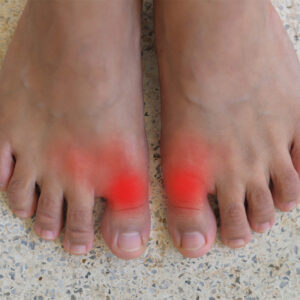
What the Heck Is Stevia?
Confession: I’m easily addicted to the sweet stuff.
Sugar, artificial sweeteners, stevia. Your other Living Well Daily editor, Nate Rifkin, can attest that I can chew through half a pack of Extra a day.
It’s really bad.
In my search for a healthier sweetener that isn’t as caloric as sugar and isn’t artificial like aspartame or sucralose (Splenda), I came across stevia. You too have probably seen it lately popping up as the new best “natural sweetener”.
In fact, it seems many of you share my sweet tooth, because you wrote in asking about stevia.
So what is stevia, exactly?
Stevia rebaudiana Bertoni is a plant that commonly grows in tropical regions in South America and Asia. It was discovered over 1,500 years ago in Paraguay, where the natives chewed on stevia leaves for its sweet taste and to help freshen their breath. They also added it to their teas and used it as a tonic to settle an upset stomach.
During the sugar shortage of WWII, the NIH began researching stevia. But once the war was over, their interest in stevia dropped. Japan picked up where the NIH left off, and by 1982, stevia made up a 40% share of the commercial sweetener market in Japan.
Today, it’s continuing to be studied for its safety and health benefits and is making its way into many products, including Pepsi’s new soda, Pepsi True. (But don’t let the green packaging fool you: It still has 60 calories of pure sugar that you’re better off without.)
The two main components of stevia that give it the sweet taste are steviosides and rebaudiosides. Many of the stevia products on the market are rebaudioside extracts, since the steviosides can give a bitter aftertaste.
Since stevia is marketed as being “natural,” that must mean it’s safe, and certainly better than artificial sweeteners, right? Well, the truth is that some of the stevia packets you find in your grocery store aren’t exactly natural stevia.
There are actually four different types of stevia:
- The whole plant.
- The whole plant leaf dried and powdered (about 30-40 times sweeter than sugar).
- Liquid or powdered stevia rebaudioside extract (up to 200 times sweeter than sugar).
- And products like Coca-Cola’s Truvia, which are refined stevia mixed with erythritol (or sometimes maltodextrin) and “natural flavors.” (About 400 times sweeter than sugar.)
At a glance, Truvia doesn’t sounds so bad. It’s just three ingredients.
Well… I found Coca-Cola’s patent for refining the rebaudioside from stevia, and it looks to be anything but natural (U.S. Patent # 20070292582 A1). Creating Truvia involves an extensive refining process that even includes mixing it with methanol (which the CDC calls a “toxic alcohol”).
In addition, erythritol is the byproduct of yeast fermentation of corn. As for “natural flavors”, well, they can be derived from bugs and the anal scent glands of beavers.
And while that’s technically natural, it’s not exactly appetizing, is it?
Other commercial stevia products you may find in the grocery store are mixed with maltodextrin to help make it a powder form. Maltodextrin can be made from GMO corn.
Yikes.
Though it’s probably a better option than toxic aspartame, if you want to give stevia a shot, steer clear of Truvia and other brands that use ingredients like rebaudioside A, erythritol and maltodextrin.
But what about safety of the not-so-refined stuff? Well, research is indicating that true stevia might actually have a bunch of health benefits. Stay tuned, because in the next issue of Living Well Daily, I’m going to cover the health benefits of stevia and point you to the best brands to buy.
To living well,
Jasmine LeMaster
View More Free Articles
Mailbag: Unsteady on Your Feet? Now What?
“I’ve been having trouble with my balance lately and have fallen a couple of times. Could this be related to osteoporosis or another underlying cause?” – John Hi John, It’s always concerning when someone experiences balance issues or falls. While osteoporosis can contribute to an increased risk of falling, several other underlying causes should also...
Is There Really a Hidden Benefit to BROCCOLI?
Just when we thought broccoli’s resume couldn’t get any more impressive, new research proves us wrong. The phytonutrients in this tasty veggie can lower inflammation… balance blood sugar… and even boost your memory. And you likely already know of broccoli’s legendary prowess in preventing cancer. Now, a new study reveals that sulforaphane, the potent compound...
Belly Trick BOOSTS Brain Function
Boy do I love a cheap and easy solution. And if you can’t resist a good bargain either, keep reading. Because I have a brain-boosting one to share that fits the bill. If you’re like most folks, you intend to stay as sharp as a tack well into your golden years. So, you’re always on...
The Hidden Heart Danger LURKING in Your Gut?
Dear Living Well Daily Reader, Living with inflammatory bowel disease (IBD) is no walk in the park. The cramping, the urgency, the endless trips to the bathroom—it’s a daily struggle that can leave you exhausted and frustrated. And here’s the kicker: sometimes, IBD’s vague symptoms can lead to misdiagnosis or even NO diagnosis at all....
Has the Key to Unlocking Better MS Treatments Been Found?
Dear Living Well Daily Reader, Imagine waking up one morning and feeling a strange tingling in your fingers. You brush it off, thinking it’s just a pinched nerve. But then, your vision starts to blur, and your balance is thrown off. Suddenly, you’re faced with a terrifying reality: you have multiple sclerosis (MS). For the...
6 Secret Ways to Spot HIDDEN Processed Foods
“Avoid eating processed foods,”—If I’ve said it once, I’ve said it a thousand times. The reason why is simple. These Frankenfoods are designed to satisfy your taste buds. But they leave your body full of foreign chemicals that can cause harm and in need of more nutrients. But a patient asked me the other day,...
8 Red Flags There’s a Heart Attack in YOUR Future
Humor me and count to 40. Done? According to the Centers for Disease Control and Prevention (CDC), someone in the United States just had a heart attack. That adds up to around 805,000 people a year. Many of those were a “silent” heart attack, with the victim having no clue it even happened—and they go...
Mailbag! Neuropathy Pain? Ease Tingling in Hands and Feet
“I’m diabetic and have burning, tingling pain in my feet. My doctor says it is peripheral neuropathy, and there aren’t any cures. But do you have any tips to help me deal with it?” —Hank Hi Hank, Uncontrolled blood sugar can trigger nerve pain called peripheral neuropathy. This condition causes pain and numbness, usually in...
5 Often Overlooked Diabetes Red Flags
Some of the worst diseases we face are also the stealthiest. They silently sneak up with few signs that they’re harming us from the inside. Well, that is until it’s too late, and they’re well-established. Osteoporosis and hypertension are on that list. And so is type 2 diabetes. In fact, scientists estimate that around 25...
ALERT: CGMs Can Give Inaccurate Glucose Readings
Keeping your blood sugar in check is critical for a longer, healthier life. It used to be if you wanted to watch your blood sugar for hours at a time, you’d have to go to a lab and be hooked up to an expensive, complicated machine. But now, anyone can get a continuous glucose monitor...









